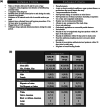Four-day plaque regrowth evaluation of a peptide chewing gum in a double-blind randomized clinical trial
- PMID: 32558314
- PMCID: PMC7301399
- DOI: 10.1002/cre2.275
Four-day plaque regrowth evaluation of a peptide chewing gum in a double-blind randomized clinical trial
Abstract
Objective: Antimicrobial peptide, KSL-W, formulated as an antiplaque chewing gum (APCG), was tested to evaluate the dental plaque inhibition activity and safety in an IRB approved and FDA regulated 4-day plaque regrowth clinical study.
Methods: This Phase 2 two-armed placebo-controlled, double blind, randomized (1:1), multiple dose, and single-center study was evaluated in a proof of concept for the APCG containing 30 mg antimicrobial peptide KSL-W. Twenty six generally healthy subjects were consented and randomized into the study. The subjects were administered a dose three times per day for four treatment days following a complete dental prophylaxis. Participants were prohibited from conducting oral hygiene care (teeth brushing, flossing, and/or mouth wash rinse) for the duration of the trial. Twelve to 16 hr prior to the baseline visit, the subjects were to abstain from oral hygiene care. The Quigley-Hein Turesky plaque index (QHT) score and the oral soft tissue clinical exams were obtained at both Day 0 and Day 4.
Results: All randomized study subjects that received either APCG or placebo gum completed the study with no significant adverse events recorded. The APCG significantly inhibited the regrowth of dental plaque over the course of 4 days. The whole mouth data demonstrated a difference in the QHT between the APCG and the placebo gum of 1.14 (SE = 0.27) and 95% confidence bounds of 0.58, 1.70 with a two-tailed P value of .0003.
Conclusion: Considering the limited sample size, the proof of concept analysis in this Phase 2 study confirmed that APCG is effective against dental plaque formation and safe for human use. (ClinicalTrials.gov Study ID# NCT02864901).
Keywords: biofilm(s); drug delivery; oral hygiene; salivary antimicrobial proteins.
© 2019 The Authors. Clinical and Experimental Dental Research published by John Wiley & Sons Ltd.
Conflict of interest statement
The authors declare no conflict of interest.
Figures





Similar articles
-
Combined Phase 1/2a Initial Clinical Safety Trials and Proof-of-Concept Assessment of a Novel Antimicrobial Peptide KSL-W Anti-Plaque Chewing Gum.Clin Exp Dent Res. 2024 Dec;10(6):e943. doi: 10.1002/cre2.943. Clin Exp Dent Res. 2024. PMID: 39466933 Free PMC article. Clinical Trial.
-
Newly formulated chlorhexidine gluconate chewing gum that gives both anti-plaque effectiveness and an acceptable taste: a double blind, randomized, placebo-controlled trial.J Int Acad Periodontol. 2008 Apr;10(2):38-44. J Int Acad Periodontol. 2008. PMID: 18564727 Clinical Trial.
-
Use of chlorhexidine chewing gum significantly reduces dental plaque formation compared to use of similar xylitol and sorbitol products.J Periodontol. 1996 Mar;67(3):181-3. doi: 10.1902/jop.1996.67.3.181. J Periodontol. 1996. PMID: 8708947 Clinical Trial.
-
Development of a Sustained Antiplaque and Antimicrobial Chewing Gum of a Decapeptide.AAPS PharmSciTech. 2017 Aug;18(6):2240-2247. doi: 10.1208/s12249-016-0706-9. Epub 2017 Jan 9. AAPS PharmSciTech. 2017. PMID: 28070851
-
The effects of sugar-free chewing gums on dental plaque regrowth: a comparative study.J Dent. 2007 Jun;35(6):503-8. doi: 10.1016/j.jdent.2007.01.008. Epub 2007 Mar 9. J Dent. 2007. PMID: 17350152 Clinical Trial.
Cited by
-
Delivery of biologics: Topical administration.Biomaterials. 2023 Nov;302:122312. doi: 10.1016/j.biomaterials.2023.122312. Epub 2023 Sep 4. Biomaterials. 2023. PMID: 37690380 Free PMC article. Review.
-
3D printed scaffold for repairing bone defects in apical periodontitis.BMC Oral Health. 2022 Aug 8;22(1):327. doi: 10.1186/s12903-022-02362-4. BMC Oral Health. 2022. PMID: 35941678 Free PMC article.
-
Natural Antimicrobial Peptides and Their Synthetic Analogues for Effective Oral Microflora Control and Oral Infection Treatment-The Role of Ceragenins in the Development of New Therapeutic Methods.Pharmaceuticals (Basel). 2024 Dec 20;17(12):1725. doi: 10.3390/ph17121725. Pharmaceuticals (Basel). 2024. PMID: 39770567 Free PMC article. Review.
-
Assessing Cytotoxicity, Proteolytic Stability, and Selectivity of Antimicrobial Peptides: Implications for Orthopedic Applications.Int J Mol Sci. 2024 Dec 10;25(24):13241. doi: 10.3390/ijms252413241. Int J Mol Sci. 2024. PMID: 39769006 Free PMC article.
-
Recent Advances in the Development of Antimicrobial and Antifouling Biocompatible Materials for Dental Applications.Materials (Basel). 2021 Jun 9;14(12):3167. doi: 10.3390/ma14123167. Materials (Basel). 2021. PMID: 34207552 Free PMC article. Review.
References
-
- Balhaddad, A. A. , Kansara, A. A. , Hidan, D. , Weir, M. D. , Xu, H. H. K. , & Melo, M. A. S. (2019). Toward dental caries: Exploring nanoparticle‐based platforms and calcium phosphate compounds for dental restorative materials. Bioact Mater, 4(1), 43–55. 10.1016/j.bioactmat.2018.12.002 - DOI - PMC - PubMed
-
- Bengoechea, J. A. , & Skurnik, M. (2000). Temperature‐regulated efflux pump/potassium antiporter system mediates resistance to cationic antimicrobial peptides in Yersinia . Molecular Microbiology, 37(1), 67–80. - PubMed
-
- Dawes, C. , Tsang, R. W. , & Suelzle, T. (2001). The effects of gum chewing, four oral hygiene procedures, and two saliva collection techniques, on the output of bacteria into human whole saliva. Archives of Oral Biology, 46(7), 625–632. - PubMed
Publication types
MeSH terms
Substances
Associated data
LinkOut - more resources
Full Text Sources
Medical

